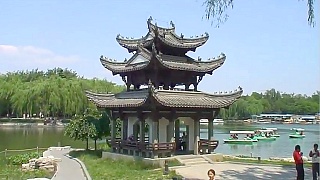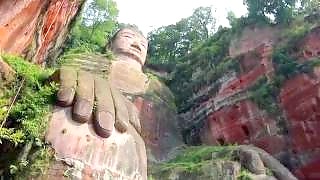‘Your Collar’, a haunting, romantic song from the imperial music of the Han Dynasty ...
[640],shadow=true,start=30,stop=Plus, bonus music films ...
'I'm right here, where are you', sung by Alu Azhou and the Mountain Wind Group 阿鲁阿卓, 山风组合 生如夏花.
Inspired by Stray Birds by famous Indian poet Rabindranath Tagore, 1916 (生如夏花之绚烂,死如秋叶之静美 --飞鸟集, 泰戈尔, 1916). Lyrics and Music by PU Shu (朴树).
"In this life, we can not stay so long ..."
Plus Song of the Surging Water - title song of the 2015 movie Wolf Totem 汪峰 沧浪之歌(《狼图腾》主题曲). Sung by Wang Feng.
Lyrics by WANG Feng (汪峰); music by Adam HUANG (HUANG Yong, 黄勇); with Alianuul (Morin Khuur solo) and NING FangLiang (violin solo).
"I am broken, but I love flying ..."
鄧紫棋 G.E.M. - 存在_我是歌手第二季 (2014年1月10日)
[320],shadow=true,start=,stop=(Life is like a) Na Ying, Warm Spring with Blooming Flowers 春暖花开 (when I am with you) ...
[320],shadow=true,start=,stop=Wang Feng song, 'I love you, China' 我爱你 中国 (Wo Ai Ni, Zhong Guo) from the CCTV New Year Gala ...
[320],shadow=true,start=,stop=If you can, please support this site with a donation; it really does help us keep going ... Thank you from the BeijingBuzzz team !
 Waiting for my love – beautiful Han dynasty music …
Waiting for my love – beautiful Han dynasty music …







![A great film of the Great Wall north of Beijing, including `wild wall`, accompanied by great music (踏古 (Ta Gu) by Lin Hai, `Walking into Ancientry`, with Chinese lute (pipa)). We [mum, dad - videographer - and son and daughter, from Singapore] hiked 3 sections of the Great Wall in winter, without any guides after studying blogs and posts by fellow hikers. All these sections are different. From the unrestored GuBeiKou Great Wall where we were the only people around, to the wonderful JinShanLing, where the climb is steep and every direction gives you good photo opportunities, to the restored MuTianYu where we hiked in heavy snowfall. We stayed at local farmhouses on both nights, dined with the locals and hitched rides to nearby bath-houses. Temperature ranged from -5 deg C (day) to -12 deg C (night). Winter daybreak is at 7am and the sky becomes dark by 5pm so one has only 10 hours of daylight, so plan your travelling and hiking schedules carefully. This once-in-a-lifetime experience was captured on video and we would like to share it with you. The feelings just can`t be described - you need to experience it first hand. Take only memories, leave only footprints and kindness . . . A wonderful animation combining traditional Chinese painting and dance - don`t miss it ! 踏古-林海 作曲:林海 视频作者:中国传媒大学动画学院 Hiking the Great Wall 长城 of China in the snow](https://www.beijingbuzzz.com/b183.jpg)













